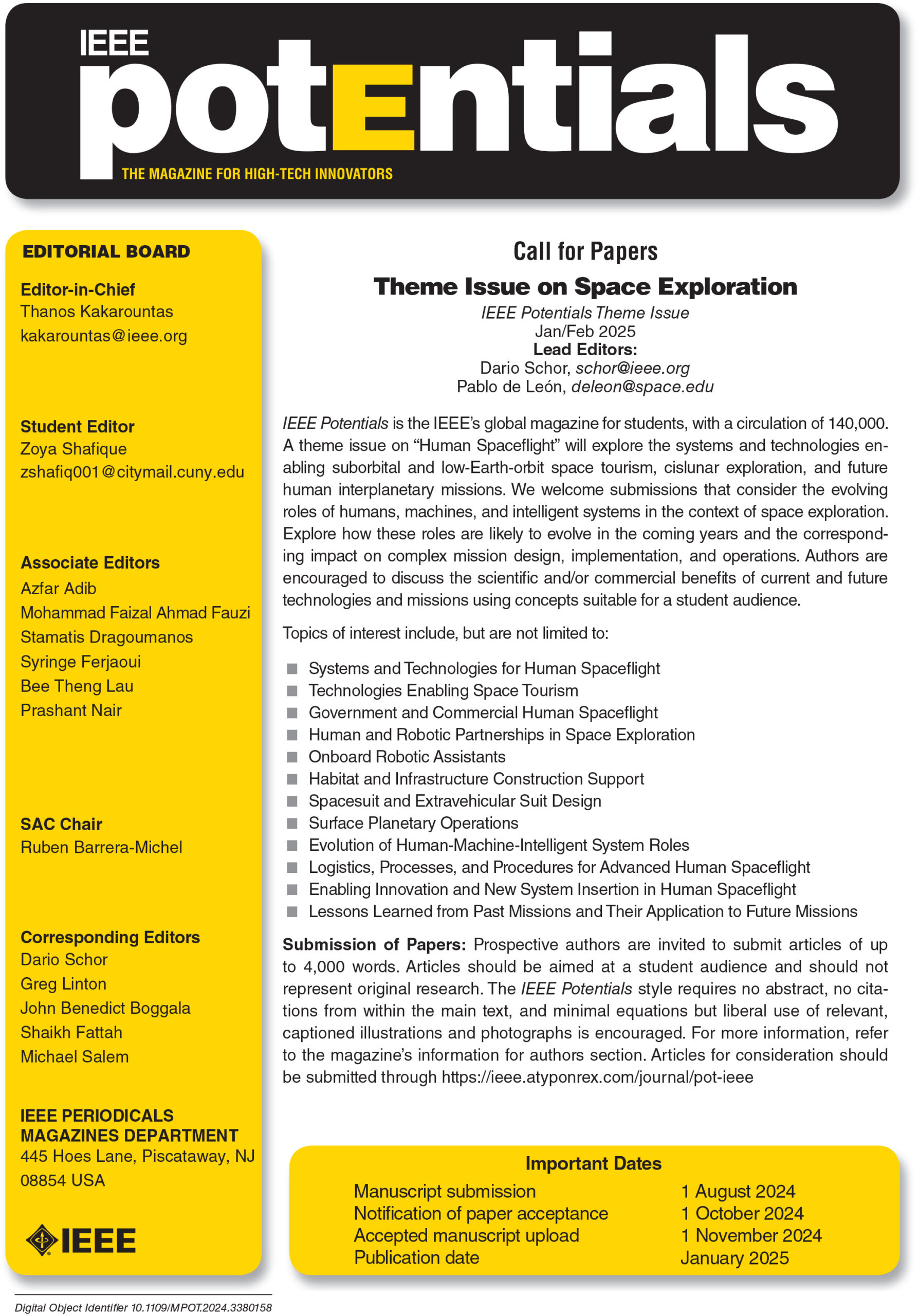Submission of Papers: Prospective authors are invited to submit articles of up to 4,000 words. Articles should be aimed at a student audience and should not represent original research. The Potentials style requires no abstract, no citations from within the main text and minimal equations, but liberal use of relevant, captioned illustrations and photographs is encouraged.
For more information, refer to the Magazine’s Information for Authors.
Articles for consideration should be uploaded to https://ieee.atyponrex.com/journal/pot-ieee.
Submit an article
Upcoming Issues

How to Submit Articles
IEEE Potentials is dedicated to serving the needs of undergraduate and graduate students, as well as entry-level engineers. Article subjects are explored through timely manuscripts on both technical and career-related issues.
If you are a technology professional who has cutting-edge technical ideas, formulated concepts about what will work, or opinions about the forces that influence the problem-solving process for the student and young-professional audience, IEEE Potentials would like to hear from you.
IEEE Potentials is interested in manuscripts that deal with theory, practical applications, or new research. They can be tutorial in nature. Submissions may consist of either full articles or shorter, opinion-oriented essays.
IEEE Potentials Magazine is the publication dedicated to undergraduate and graduate students, and young professionals. Potentials explores career strategies, the latest in research, and important technical developments. Through its articles, it also relates theories to practical applications, highlights technology’s global impact, and generates international forums that foster the sharing of diverse ideas about the profession.
IEEE Potentials is published bi-monthly starting in January six times a year. All IEEE members have access to Potentials articles in IEEE Xplore.®
- All manuscripts should be written at the level of the student audience.
- Articles without equations are preferred; however, a minimum of equations is acceptable.
- List no more than 12 references at the end of your manuscript. No embedded reference numbers should be included in the text. If you need to attribute the source of key points or quotes, state names in the text and give the full reference at the end.
- Limit figures to 10 or less.
- Articles should be approximately 2,000-4,000 words in length; essays should be 900-1,000 words.
- Include a brief biography of four to six lines for each author.


